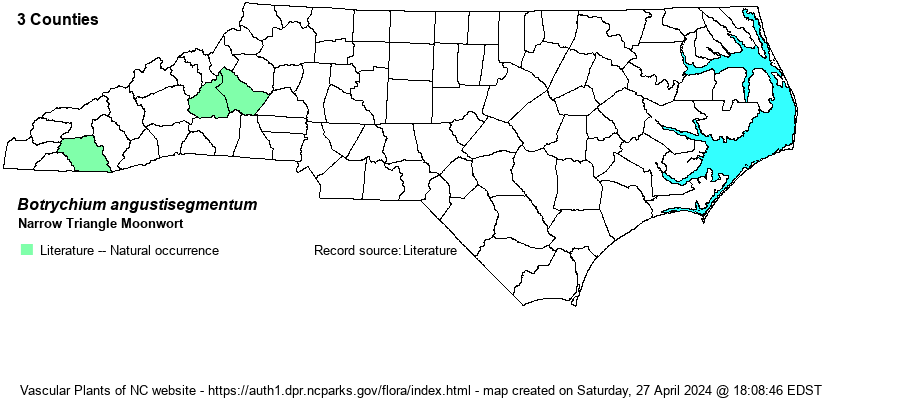| taxonName | relationship | relatedTaxonName | relatedTaxonRefText | relComments |
|---|
|
| Botrychium angustisegmentum | = | Botrychium lanceolatum var. angustisegmentum | Gleason and Cronquist (1991) | |
| Botrychium angustisegmentum | = | Botrychium lanceolatum var. angustisegmentum | Fernald (1950) | |
| Botrychium angustisegmentum | = | Botrychium lanceolatum var. angustisegmentum | Gleason (1952) | |
| Botrychium angustisegmentum | = | Botrychium lanceolatum var. angustisegmentum | Kartesz (1999) | |
| Botrychium angustisegmentum | = | Botrychium lanceolatum var. angustisegmentum | Flora of Virginia | |
| Botrychium angustisegmentum | = | Botrychium lanceolatum var. angustisegmentum | Wofford (1989) | |
| Botrychium angustisegmentum | = | Botrychium lanceolatum var. angustisegmentum | Flora of West Virginia | |
| Botrychium angustisegmentum | = | Botrychium lanceolatum ssp. angustisegmentum | Flora of North America (1993b, 1997, 2000, 2002a, 2002b, 2003a, 2004b, 2005, 2006a, 2006b, 2006c, 2007a, 2009, 2010) | |
| Botrychium angustisegmentum | = | Botrychium lanceolatum ssp. angustisegmentum | | |
| Botrychium angustisegmentum | = | Botrychium lanceolatum | | |
| Source: Weakley's Flora |

